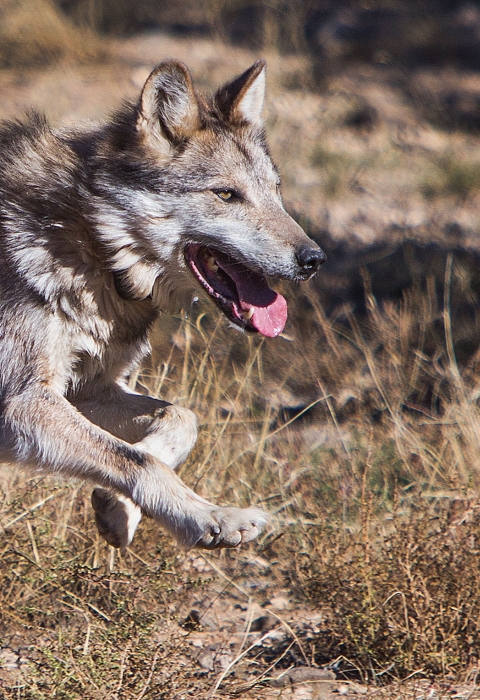The wild population of Mexican wolves in the United States continued to grow in 2021. According to the 2021 annual count, the U.S. population of Mexican wolves has increased by 5 percent since the previous year, raising the total number of wolves in the wild to a minimum of 196 animals. This marks the sixth consecutive year of growth in the wild population.
From November 2021 through February 2022, the Interagency Field Team (IFT) conducted ground and aerial counts of Mexican wolves in Arizona and New Mexico. According to the IFT, the population is distributed with 112 wolves in New Mexico and 84 in Arizona. In 2020, the team documented a minimum of 186 wolves. The slower growth in 2021 is attributed to low pup recruitment in the wild population.
“We are happy to see the wild population of Mexican wolves continue to grow year after year,” said Brady McGee, U.S. Fish and Wildlife Service Mexican Wolf Recovery Coordinator. “The Service and our partners remain focused on recovery through improving the genetic health of the wild population and reducing threats, while also working to minimize conflicts with livestock.”
Among the 2021 findings:
- A minimum of 45 packs (including new pairs) were documented at the end of 2021: 28 in New Mexico and 17 in Arizona. A wolf pack is defined as two or more wolves that maintain an established territory.
- A minimum of 144 pups were born in 2021, with at least 56 surviving until the end of the year (a 38 percent survival rate). The average survival of Mexican wolf pups in their first year is around 50 percent.
- The IFT recorded a minimum of 25 breeding pairs (13 in New Mexico, 12 in Arizona) with pups in 2021. By comparison, there were an estimated 20 breeding pairs in 2020. A breeding pair is defined as a pack that consists of an adult male and female and at least one pup of the year surviving through December 31.
- There were 92 collared wolves in the wild at the end of the year, which is nearly 50 percent of the wild population. These radio collars use satellite technology to accurately record wolf locations on a frequent basis. Biologists on the IFT use this information to gain timely information about wolf behavior in the wild and assist with management of the wild population.
- The IFT documented 25 mortalities in the wild population of Mexican wolves in 2021, which is similar to the mortality rate in 2019 and 2020.
- Mexico celebrated its 10th anniversary of releasing wolves to the wild and reported at least 40 wolves in the wild at the end of 2021. The U.S. Fish and Wildlife Service worked with Mexico to release four adult wolves into Mexico in 2021.
“While we hope for a higher growth rate, the 5% growth observed, when looking at the totality of the program, still indicates a recovering population. Overall wildlife populations had a hard year with low precipitation and little winter snowpack last year. I am encouraged by the increase in breeding pairs and the number of packs present. These measures continue to increase and bode well for future recovery for the Mexican wolf,” said Jim deVos, Arizona Game and Fish Department Mexican wolf coordinator.
In 2021, the IFT placed a record 22 captive-born pups into seven wild dens (a process called “cross fostering”) to boost the genetic diversity in the wild population. These cross-fostered pups are included in the minimum of 144 pups recorded for the year. The IFT has since captured and collared two of these pups and will continue efforts in 2022 to document others that may have survived. With these newly collared pups, the known number of fostered wolves alive is 14.
The Mexican wolf is the rarest subspecies of gray wolf in North America. It is listed separately from the gray wolf as an endangered subspecies under the federal Endangered Species Act. In 1977, the Service and many partners initiated efforts to conserve the subspecies by developing a bi-national captive breeding program with the seven remaining Mexican wolves in existence. Approximately 380 Mexican wolves are currently maintained in more than 60 facilities throughout the United States and Mexico.
Partners in Mexican wolf recovery in the United States include the Service, Arizona Game and Fish Department, New Mexico Department of Game and Fish, U.S. Department of Agriculture (USDA) Forest Service, USDA APHIS Wildlife Services, White Mountain Apache Tribe, Bureau of Land Management, and National Park Service.
To learn more, read our story on how we count Mexican wolves or visit the Mexican Wolf Recovery Program page.



